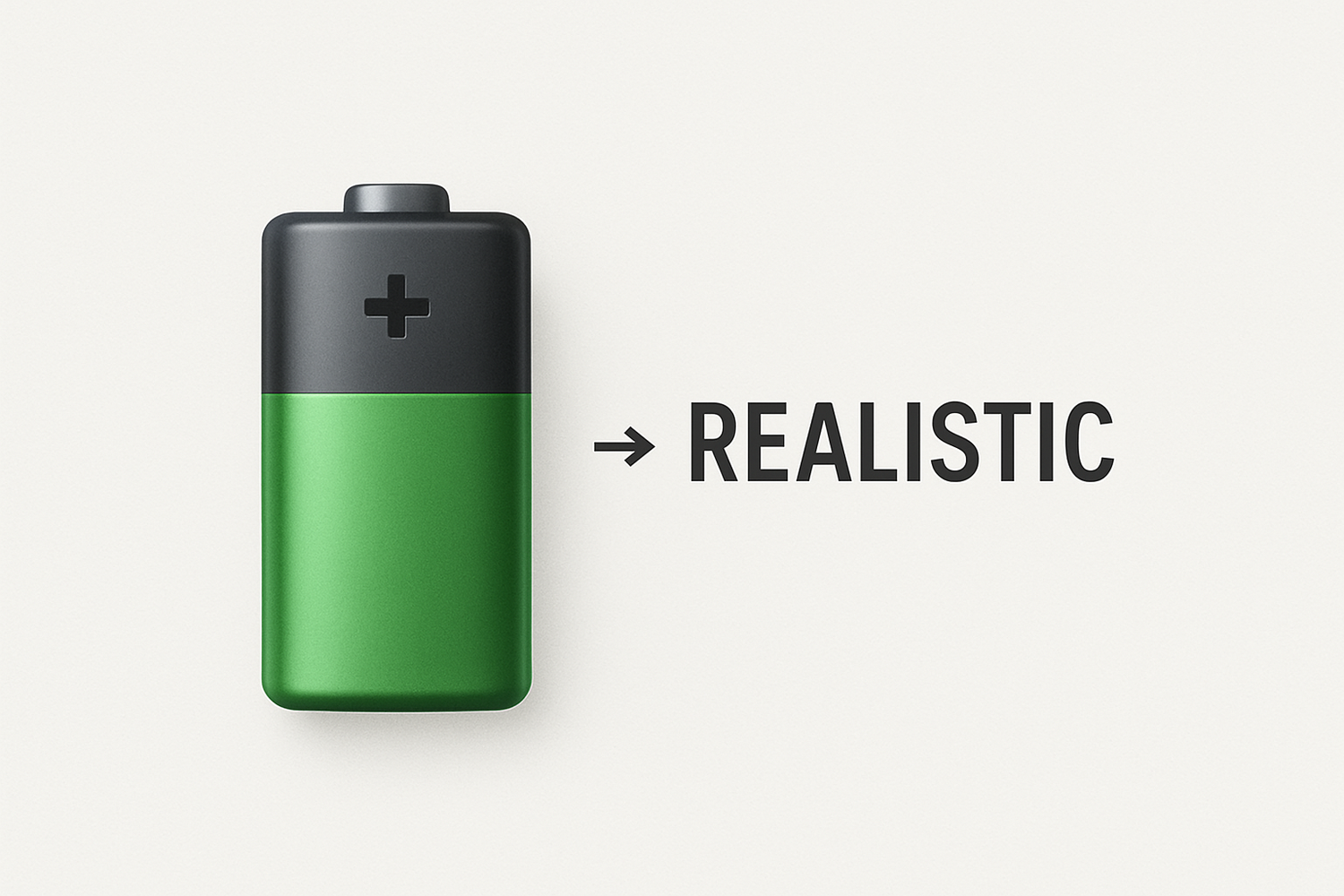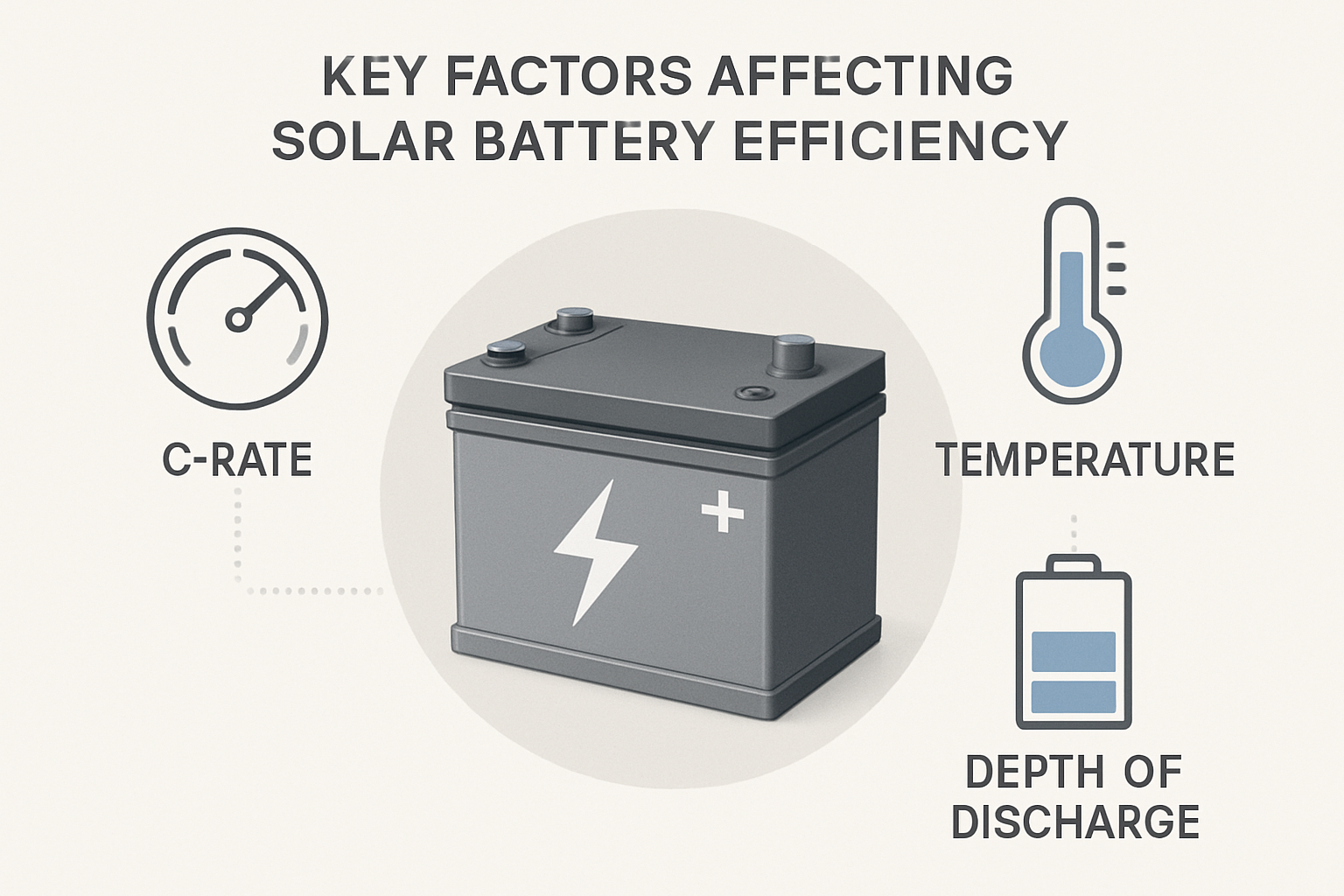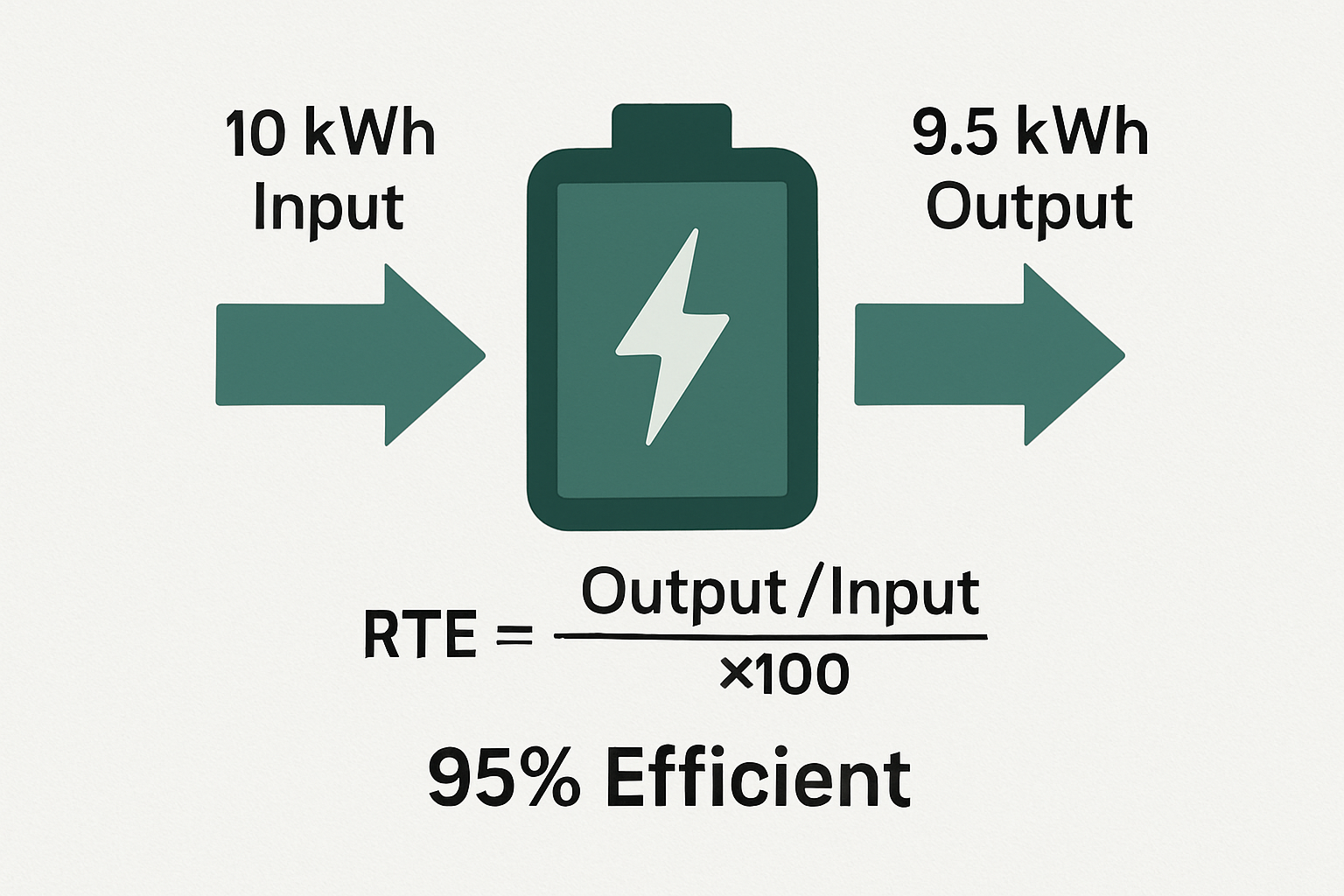When building a solar energy system, you focus on panel wattage and inverter capacity. But one of the most critical metrics for a battery storage system is its round trip efficiency (RTE). This figure directly impacts how much of your stored solar energy you can actually use. For Lithium Iron Phosphate (LiFePO4) batteries, a high RTE is one of their most significant advantages.
Understanding Battery Energy Efficiency
Round trip efficiency measures the energy lost during a battery’s charge and discharge cycle. Think of it as a simple ratio: the amount of usable energy you get out, divided by the amount of energy you put in. No energy transfer is perfect, and some energy is always lost, primarily as heat. The closer the RTE is to 100%, the less energy is wasted.
The Basic Formula
The calculation for RTE is straightforward:
RTE (%) = (Energy Discharged / Energy Charged) x 100
For example, if you put 10 kilowatt-hours (kWh) of electricity into your battery and can only retrieve 9.5 kWh, your round trip efficiency is 95%.
Why 100% Efficiency Isn't Possible
Energy is lost due to the internal resistance within the battery and through chemical processes during charging and discharging. Every time ions move within the battery, they encounter resistance, which generates heat. This dissipated heat is energy that cannot be recovered. While it's impossible to eliminate this loss completely, different battery chemistries manage it with varying degrees of success.
Why LiFePO4 Batteries Excel in Efficiency
LiFePO4 batteries are a leading choice for solar energy storage, largely due to their superior round trip efficiency, which often exceeds 92% and can be as high as 97%. This high level of performance stems from the inherent stability and low internal resistance of their chemistry.
The Advantage of Lithium Iron Phosphate Chemistry
The chemical structure of LiFePO4 is exceptionally stable. This stability means less energy is wasted as heat during the charge and discharge cycles. The result is a more efficient transfer of energy, ensuring that more of the power generated by your solar panels is stored and available for use later. As noted in a discussion on solar storage performance, maximizing the energy you can retrieve is fundamental to an effective system.
LiFePO4 vs. Other Battery Technologies
When compared to traditional battery types, the efficiency of LiFePO4 technology becomes even more apparent. Older technologies like lead-acid suffer from significantly higher energy losses.
| Battery Type | Typical Round Trip Efficiency | Key Characteristics |
|---|---|---|
| LiFePO4 (Lithium Iron Phosphate) | 92-97% | High efficiency, long cycle life, very safe. |
| Lead-Acid (AGM & Gel) | 80-85% | Lower efficiency, shorter lifespan, heavier weight. |
| Other Lithium-Ion (NMC, LCO) | 90-95% | High energy density, but can be less thermally stable than LiFePO4. |
Factors That Influence LiFePO4 Round Trip Efficiency
While LiFePO4 batteries are inherently efficient, certain operational factors can influence their performance. Understanding these can help you optimize your energy storage system.
The Impact of C-Rate
The C-rate refers to the speed at which a battery is charged or discharged relative to its capacity. A 1C rate means a 100Ah battery is charged or discharged at 100 amps. Higher C-rates can slightly decrease efficiency because forcing energy in or out more quickly generates more heat due to internal resistance. Slower charging, such as a 0.5C rate, generally results in higher efficiency.
Depth of Discharge (DoD)
Depth of Discharge is the percentage of the battery's capacity that has been used. LiFePO4 batteries can be deeply discharged, often to 90% or more, without significant damage. While DoD doesn't directly impact a single cycle's RTE as much as C-rate, consistently operating at very high DoD can affect the battery's long-term health and, consequently, its sustained efficiency over many cycles.
The Role of the Battery Management System (BMS)
A high-quality Battery Management System (BMS) is crucial. The BMS protects the cells from overcharging, over-discharging, and extreme temperatures. By keeping the battery operating within its optimal parameters, the BMS helps maintain high round trip efficiency and extends the battery's overall lifespan.
The Practical Value of High RTE
A high round trip efficiency isn't just a technical specification; it translates into tangible benefits for your home or business. According to the International Energy Agency (IEA), battery storage is a critical and fast-growing technology for the clean energy transition, making efficiency a key factor in its economic viability.
Maximizing Your Solar Investment
With a high RTE, you waste less of the valuable energy your solar panels produce. An efficiency of 95% means that for every 100 units of solar energy stored, 95 are available to power your home. With an 80% efficient lead-acid battery, you would lose 20 units, a significant difference that adds up over the life of the system.
Lowering Long-Term Energy Costs
The less energy you lose in storage, the less you need to rely on the grid. This directly reduces your electricity bills. Over the 10-15 year lifespan of a LiFePO4 battery, the cumulative savings from higher efficiency can be substantial, offsetting the initial investment and delivering a better return.
A Smarter Approach to Energy Storage
Round trip efficiency is a fundamental measure of a battery's performance. LiFePO4 batteries stand out with an RTE often exceeding 92%, ensuring minimal energy loss from your solar array to your appliances. This high efficiency, combined with their long cycle life and safety, makes them an excellent choice for anyone serious about achieving energy independence and maximizing the value of their solar power system.
Frequently Asked Questions
What is a good round trip efficiency for a LiFePO4 battery?
A good round trip efficiency for a LiFePO4 battery is typically above 92%. Many high-quality LiFePO4 batteries can achieve 95% or even higher RTE under optimal conditions.
How does RTE in LiFePO4 compare to lead-acid batteries?
LiFePO4 batteries are significantly more efficient. While LiFePO4 batteries regularly exceed 92% RTE, traditional lead-acid batteries typically have an RTE of around 80-85%. This means lead-acid batteries waste two to three times more energy during a charge/discharge cycle.
Does round trip efficiency decrease as a battery ages?
Yes, like all batteries, the round trip efficiency of a LiFePO4 battery can decrease slightly over its lifespan. This is due to an increase in internal resistance as the battery ages. However, because LiFePO4 batteries have a very long cycle life (often thousands of cycles), this degradation is slow and gradual.





Leave a comment
All comments are moderated before being published.
This site is protected by hCaptcha and the hCaptcha Privacy Policy and Terms of Service apply.